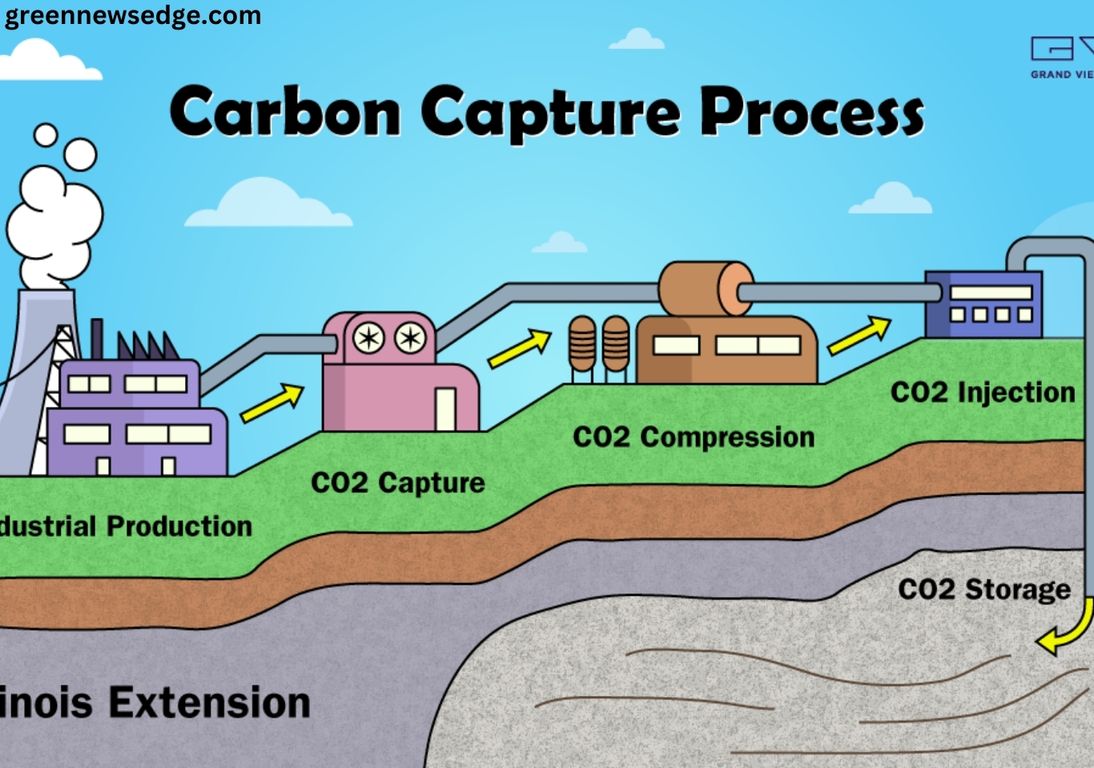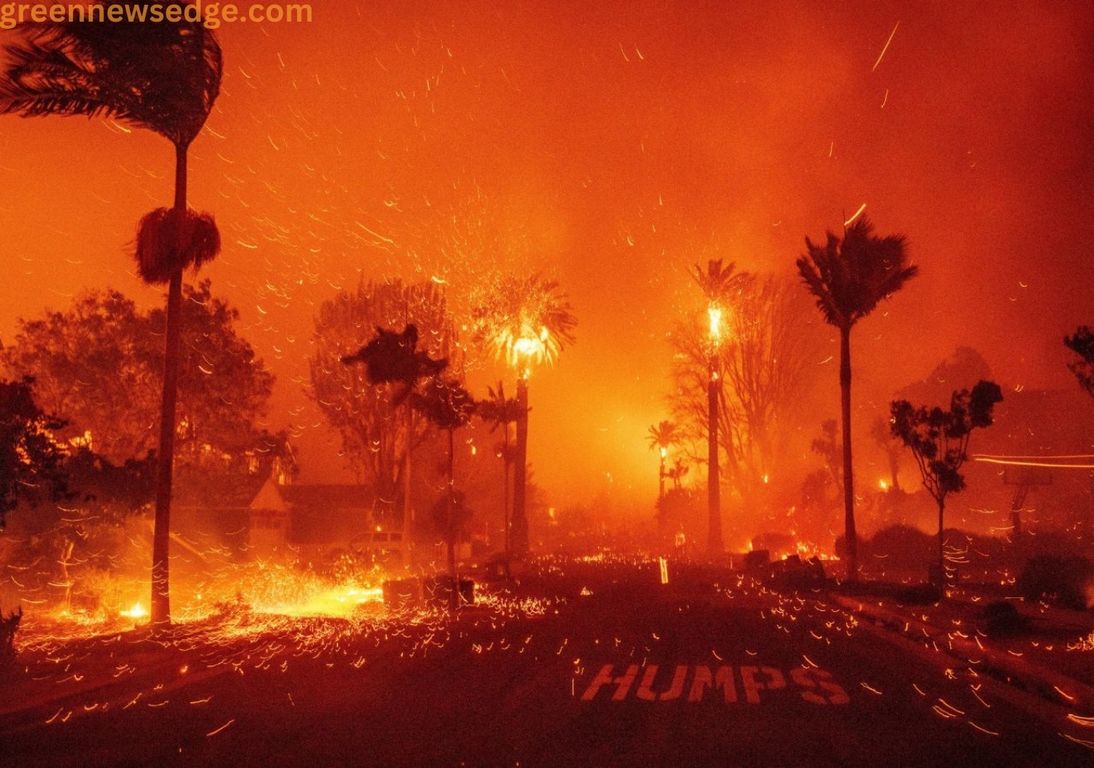Carbon capture is an advanced technology designed to reduce greenhouse gas emissions by capturing carbon dioxide (CO₂) from industrial processes and power generation before it enters the atmosphere. This captured CO₂ is then stored underground or repurposed for industrial use, preventing it from contributing to global warming. By limiting emissions from high-polluting sectors such as energy, manufacturing, and heavy industries, carbon capture plays a crucial role in climate change mitigation. As countries strive to meet net-zero targets, this technology is gaining attention as a potential solution to reduce environmental impact while supporting economic growth.
Carbon capture technology supports the transition to a more sustainable energy system by enabling cleaner industrial operations. It complements renewable energy efforts by addressing emissions from sectors where complete decarbonization is challenging. Furthermore, advancements in carbon utilization are creating new economic opportunities, as captured CO₂ can be used in enhanced oil recovery, the production of sustainable fuels, and the manufacturing of building materials. As research and innovation continue to improve efficiency and affordability, carbon capture is expected to play an increasingly vital role in achieving long-term climate goals.
Carbon Capture and Storage: How It Works
Carbon capture and storage (CCS) facilities are designed to reduce greenhouse gas emissions by preventing carbon dioxide (CO₂) generated from industrial processes and power plants from entering the atmosphere.
The process involves capturing the majority of CO₂ emissions at their source, transporting them through pipelines or other means, and securely storing them deep underground in geological formations. This long-term storage prevents CO₂ from contributing to climate change, making CCS a key strategy for reducing industrial carbon footprints while supporting global emission reduction goals.
The United Kingdom has outlined plans for multiple carbon capture projects as part of its commitment to reducing greenhouse gas emissions. Under this initiative, the UK aims to capture and store between 20 to 30 million tonnes of carbon dioxide (CO₂) annually by 2030, playing a critical role in its broader climate strategy.
However, questions remain about whether the UK is on track to meet its climate targets, given the scale of implementation and investment required. Meanwhile, the European Union has set a more ambitious goal, targeting the capacity to capture and store 50 million tonnes of CO₂ per year by 2030. Similarly, the United States has significantly increased funding for carbon capture initiatives, further accelerating global efforts to mitigate climate change through large-scale CO₂ reduction strategies.
Carbon Dioxide Removal and Its Importance
Carbon dioxide removal (CDR) refers to the process of extracting CO₂ already present in the atmosphere and securely storing it to help mitigate climate change. Unlike traditional carbon capture, which prevents emissions at their source, CDR focuses on reducing the excess CO₂ that has already accumulated in the environment.
There are two primary approaches to carbon dioxide removal. The first involves enhancing natural carbon sinks, such as forests, wetlands, and oceans, to absorb more CO₂ from the air. For instance, a major global initiative has set a goal to conserve, restore, and plant one trillion trees by 2030, reinforcing the natural world’s ability to store carbon. Since terrestrial and oceanic ecosystems naturally absorb over half of human-generated CO₂ emissions, CDR efforts seek to amplify this process through targeted conservation and restoration strategies.
The second approach relies on innovative, human-engineered methods to directly remove CO₂ from the atmosphere. Although still in the early stages of development, these technologies include direct air capture (DAC) machines that extract CO₂ for storage or reuse, bioenergy processes where plants are grown, harvested, and converted into fuels with their emissions captured, and other experimental techniques. Notable examples studied by researchers include large-scale seaweed farming in the South Atlantic Ocean and a process called enhanced rock weathering, which accelerates the natural ability of certain minerals to absorb CO₂.
All carbon dioxide removal techniques are classified as “negative emissions” technologies, as they actively extract CO₂ from the atmosphere rather than merely reducing emissions at the source. This distinguishes CDR from carbon capture and storage (CCS), which focuses on preventing new emissions from being released but does not address the existing excess CO₂ already contributing to climate change. As governments and industries seek long-term solutions for achieving net-zero targets, carbon dioxide removal is becoming an increasingly vital component of global climate strategies.
The Need for Carbon Capture and Carbon Dioxide Removal
To prevent the most severe consequences of climate change, nearly 200 countries have committed to limiting global temperature rise to 1.5°C above pre-industrial levels—an era before large-scale fossil fuel consumption began. This target, established under the Paris Agreement, is critical to mitigating the risks of extreme weather events, rising sea levels, and ecosystem disruptions.
However, human activities continue to release record levels of carbon dioxide (CO₂) into the atmosphere. If emissions persist at their current pace, global temperatures could surpass the 1.5°C threshold as early as 2030, significantly increasing the likelihood of irreversible climate damage.
Despite rapid advancements in renewable energy sources such as solar and wind power, many industries will remain dependent on fossil fuels in the coming decades. The energy sector, transportation, and heavy industries still rely on carbon-intensive processes, and while emissions from these sources are expected to decline over time, complete elimination remains a significant challenge. Additionally, certain sectors, such as agriculture and aviation, generate emissions that are nearly impossible to eliminate entirely without employing carbon removal strategies.
Given these realities, experts, including the United Nations, emphasize that achieving the 1.5°C target will likely require the large-scale deployment of both carbon capture and carbon dioxide removal technologies. Even if governments implement substantial emission reduction policies, these technologies will play a crucial role in balancing residual emissions and preventing long-term environmental damage. By integrating carbon capture and removal into global climate strategies, nations can work toward stabilizing atmospheric CO₂ levels and creating a sustainable pathway to net-zero emissions.
Challenges of Carbon Capture and Removal
Despite their potential, carbon capture and removal technologies are not being deployed at a scale necessary to significantly offset human-induced carbon dioxide (CO₂) emissions, which exceeded 40 billion tonnes in 2022.
Currently, carbon capture and storage (CCS) captures only about 45 million tonnes of CO₂ annually, a fraction of global emissions. Meanwhile, artificial carbon dioxide removal (CDR) methods, such as direct air capture, remove an even smaller amount—approximately 2 million tonnes per year. Both technologies remain costly and require significant investment to expand their impact.
According to the International Energy Agency (IEA), under existing policies governing oil and gas consumption, the world would need to capture and remove an estimated 32 billion tonnes of CO₂ annually by 2050—an amount deemed “implausible” given current technological and economic constraints.
Nature-based carbon removal efforts, such as large-scale tree planting, absorb around 2 billion tonnes of CO₂ per year. However, the effectiveness of these methods is counteracted by ongoing environmental destruction, including deforestation, which releases vast amounts of stored carbon back into the atmosphere. Additionally, the capacity of forests and other natural carbon sinks is inherently limited.
For these reasons, organizations such as the IEA emphasize that carbon capture and removal should not be seen as a substitute for reducing fossil fuel consumption. Relying on these technologies as a primary solution risks delaying urgent action on emissions reductions. Many environmental advocates argue that carbon capture initiatives are often used as “greenwashing” tactics, allowing governments and corporations to claim climate progress without implementing the fundamental changes needed to shift away from fossil fuels and reduce emissions at the source.
Frequently Asked Questions(FAQ’s)
What is carbon capture and storage (CCS)?
Carbon capture and storage (CCS) is a technology designed to capture carbon dioxide (CO₂) emissions from industrial processes and power generation before they are released into the atmosphere. The captured CO₂ is then transported and stored underground in geological formations, preventing it from contributing to climate change.
How does carbon dioxide removal (CDR) differ from CCS?
While CCS prevents new CO₂ emissions from entering the atmosphere, carbon dioxide removal (CDR) focuses on extracting CO₂ that has already been released. CDR methods include nature-based solutions, such as tree planting, and technological approaches like direct air capture (DAC) machines.
Why are CCS and CDR needed?
Despite efforts to reduce emissions, industries such as energy, aviation, and agriculture continue to release significant amounts of CO₂. Since some emissions cannot be eliminated entirely, CCS and CDR help offset them, ensuring the world stays on track to meet climate targets like limiting global warming to 1.5°C.
What are the main challenges of carbon capture and removal?
The biggest challenges include high costs, limited scalability, and the slow deployment of technologies. Currently, carbon capture facilities remove only a fraction of global CO₂ emissions, and artificial carbon removal methods remain in their early stages.
Can carbon capture and removal replace fossil fuel reductions?
No. Experts, including the International Energy Agency, emphasize that CCS and CDR should complement, not replace, efforts to cut fossil fuel use. Relying too heavily on these technologies without reducing emissions could slow down the transition to renewable energy sources.
Is carbon capture considered “greenwashing”?
Some environmental groups argue that companies and governments use CCS and CDR as a way to appear climate-conscious without making real changes to reduce emissions. While these technologies can help, they should not be used as an excuse to delay climate action.
How much CO₂ needs to be captured to meet climate goals?
To meet net-zero targets by 2050, global CCS and CDR efforts would need to capture and store billions of tonnes of CO₂ annually. However, current capacity is far below what is required, making rapid investment and innovation essential.
Conclusion
Carbon capture and carbon dioxide removal play a critical role in the fight against climate change by reducing and removing CO₂ emissions from the atmosphere. While these technologies are essential for balancing emissions from industries that cannot completely eliminate their carbon footprint, they are not a substitute for transitioning to renewable energy sources and cutting fossil fuel consumption.
Despite their potential, both carbon capture and removal methods face significant challenges, including high costs, scalability limitations, and slow implementation. Current efforts are far from the scale required to meet global climate targets, and reliance on these technologies without substantial emission reductions could hinder real progress.







